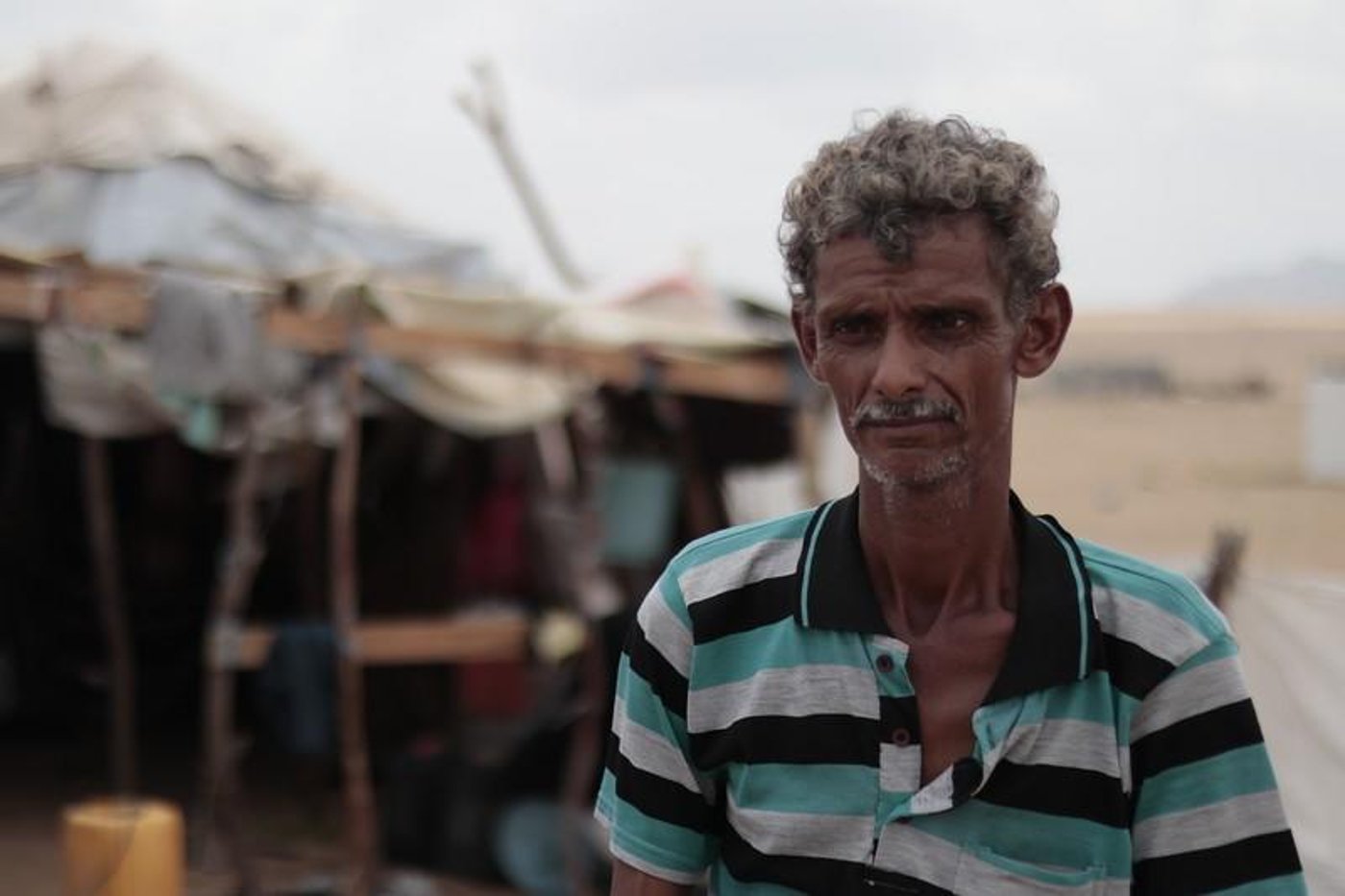When we first met Bahlool last year, he was not hopeful. “My situation…” Bahlool told us. “We built straw huts here, and my situation is bad. I don’t have mattresses, tools or anything. I give whatever I get to my children.”
The father of four fled when his home in Zabid was destroyed. His family had to endure harsh living conditions in their small hut, without blankets, water, toilets or a nearby market.
The Norwegian Refugee Council works to support refugees and displaced people in over 30 countries around the world, including Yemen. Support our work today
“Our food gets full of dust”
“We have been suffering from dust, storms and rain. You can see our situation here. Our food gets full of dust,” Bahlool told us. “The wind makes our food full of dust and rainwater enters the home and we can’t do anything to protect ourselves from it.”
These temporary huts, which displaced families built at a high cost that some are still paying back, could not withstand the harsh weather in the camp. Many of them became damaged and had to be repaired constantly, which added an extra burden to these already-suffering families.
I can only manage from day to day. If I don’t get food, my children go without.Bahlool, displaced father living in Al-Anad camp
To make some money, Bahlool sells the root of the plant salvadora persica, used in Yemen for dental hygiene. He barely makes USD 4 or 5 a day from this, hardly enough for a meal.
“I can’t provide my family with food for a week,” he said. “I can only manage from day to day. If I don’t get food, my children go without.”
Bahlool is facing a lot of challenges in making ends meet, including seeking treatment for his stomach cancer, which hinders his ability to work. During the early months of the Covid-19 pandemic, the markets closed, which made the situation even more difficult.
"At the beginning of the coronavirus,” he explained, “we couldn’t go to work and we couldn’t bring food from the market.”
One less thing to worry about…
Al-Anad camp is home to dozens of families like Bahlool’s. People have been arriving here for some time, fleeing the conflict, even though the camp was at first just a collection of scattered huts with no privacy, no water, and no latrines or other basic services.
But the Norwegian Refugee Council (NRC) has helped to change that.
These shelters will help to protect them from the rain and winds, and give them some privacy.Abdulrahman Al-Gadi, NRC shelter engineer
With funds from the European Union and the Swedish government, NRC constructed 40 wooden shelters, spaced apart to ensure privacy for the families. Water and latrines have also been installed, and community members have been trained to repair any damage as time goes on.
“We came here and built shelters for 40 families,” explained Abdulrahman Al-Gadi, a shelter engineer with NRC. “That’s about 150 people displaced from Hodeidah, Taiz and other areas. The displaced people were living in inadequate straw huts…. These shelters will help them to shelter from the rain and winds, and give them some privacy.”
Bahlool and his family now live in one of the wooden shelters constructed by NRC. “These new shelters are good,” he told us. But he still misses his home in Zabid, and longs one day to return.
“I hope for a safe and healthy life for me and my children, and that we return home when the war ends.”


